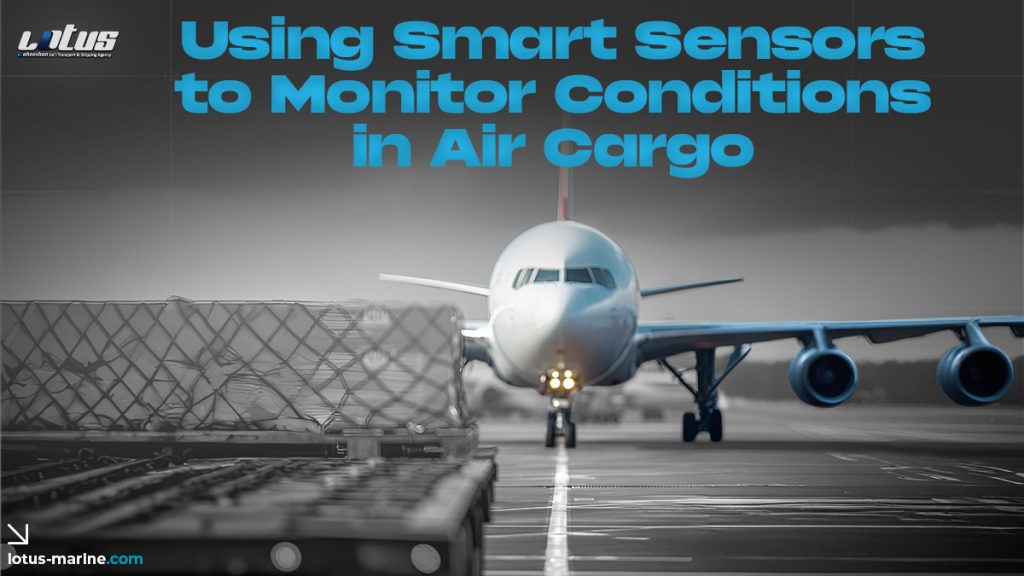Introduction
Air cargo plays a pivotal role in global logistics, transporting goods ranging from perishable items to high-value electronics. Ensuring these goods arrive in optimal condition is critical, and smart sensors are revolutionizing how this is achieved. By providing real-time monitoring and actionable data, smart sensors are transforming air freight into a more secure, efficient, and reliable industry.
What are Smart Sensors?
Smart sensors are advanced devices that collect and transmit data on various environmental conditions. Unlike traditional monitoring tools, they integrate real-time communication capabilities, often powered by the Internet of Things (IoT). These sensors measure parameters like temperature, humidity, and movement, ensuring cargo safety at every step of its journey.
The Role of Smart Sensors in Air Cargo
Smart sensors are integral to maintaining the integrity of air cargo. They provide real-time updates on the condition of goods, enabling logistics teams to respond promptly to any deviations. This is particularly crucial for perishable items like vaccines or high-value goods such as electronics, where even minor mishandling can result in significant losses.
Types of Smart Sensors Used in Air Cargo
Temperature Sensors
These ensure that temperature-sensitive goods, such as pharmaceuticals and frozen foods, remain within specified ranges.
Humidity Sensors
These are critical for items like electronics and textiles, which can be damaged by excessive moisture.
Shock and Vibration Sensors
These sensors detect physical impacts, helping to identify handling issues and prevent damage to fragile items.
GPS Tracking Sensors
GPS-enabled sensors provide real-time location tracking, ensuring cargo is on the correct route and offering security against theft.
Benefits of Using Smart Sensors
- Enhanced Cargo Safety: Real-time alerts allow immediate action to prevent damage or loss.
- Improved Efficiency: Automated monitoring reduces the need for manual checks.
- Cost Reduction: Predictive data helps avoid potential losses and reduces insurance claims.
Applications in Perishable Goods Transportation
Pharmaceuticals
Smart sensors ensure that vaccines and medications remain within the required temperature range throughout the journey, maintaining efficacy.
Food Products
Sensors help monitor conditions to preserve freshness, preventing spoilage and reducing waste.
Applications in High-Value Goods Transportation
Electronics and Luxury Items
With real-time tracking, companies can monitor the exact location and condition of these goods, deterring theft and tampering.
Art and Antiques
Shock and vibration sensors help safeguard delicate and irreplaceable items during transit.
IoT Integration in Smart Sensors
The IoT connects smart sensors across the supply chain, enabling seamless communication between devices. This integration enhances data accuracy, simplifies decision-making, and creates a more efficient logistics ecosystem.
Challenges in Implementing Smart Sensors
- Initial Costs: High upfront investments can deter smaller companies.
- System Integration: Merging new technology with existing infrastructure requires expertise.
- Data Security: Ensuring the safety of transmitted data is critical to prevent breaches.
How Airlines and Logistics Companies Benefit
Many logistics companies have adopted smart sensors to gain a competitive edge. For instance, airlines use these sensors to monitor cargo conditions during long-haul flights, ensuring compliance with client and regulatory demands.
Regulatory and Compliance Considerations
International air cargo regulations often mandate strict monitoring standards. Smart sensors help companies meet these requirements, ensuring compliance and avoiding penalties.
Advancements in Smart Sensor Technology
Technological advancements, such as AI and machine learning, are enhancing smart sensors’ capabilities. Predictive analytics can forecast potential risks, allowing preemptive actions to safeguard cargo.
Reducing Environmental Impact Through Smart Sensors
By minimizing wastage due to spoilage or mishandling, smart sensors contribute to sustainability efforts. Their ability to optimize resource use also aligns with environmental goals.
Case Studies
Example 1: Pharmaceutical Supply Chain
A leading pharmaceutical company reduced temperature deviations by 90% after implementing smart sensors, ensuring product quality and customer satisfaction.
Example 2: Luxury Goods Transportation
A high-end electronics manufacturer adopted GPS-enabled sensors, reducing theft incidents by 50% and enhancing customer trust.
Conclusion
Smart sensors are transforming air cargo logistics by ensuring the safety and quality of transported goods. With benefits spanning cost savings, enhanced efficiency, and sustainability, these technologies are becoming indispensable for modern logistics. Companies that adopt smart sensors today are positioning themselves for long-term success in a rapidly evolving industry.
FAQs
Q1: What are smart sensors in air cargo?
A1: Smart sensors monitor conditions like temperature, humidity, and location in real-time, ensuring cargo safety.
Q2: How do smart sensors improve air cargo efficiency?
A2: They provide automated monitoring and alerts, reducing manual efforts and enabling quick responses.
Q3: Are smart sensors costly to implement?
A3: While initial costs are high, long-term savings and efficiency gains outweigh the investment.
Q4: What industries benefit most from smart sensors?
A4: Pharmaceuticals, food, electronics, and luxury goods transportation gain significant advantages.
Q5: How do smart sensors contribute to sustainability?
A5: By minimizing cargo wastage and optimizing resources, they support environmental goals.







